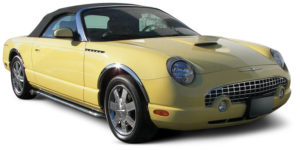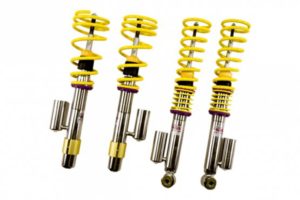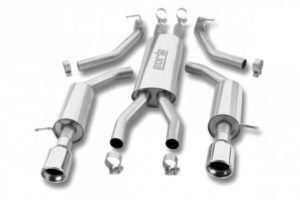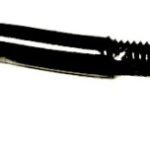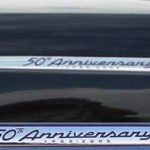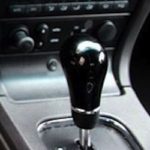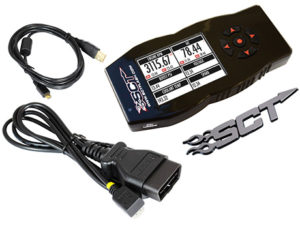 So you own a 2002-2005 Ford Thunderbird but aren’t completely satisfied with the power and performance? What can you do? The good news is that there are a number of aftermarket performance upgrades for the 2002-2005 T-Bird, and most are simple and relatively inexpensive ‘bolt-on’ modifications that don’t require any permanent change to your car. In addition to power upgrades to add more horsepower, torque and better acceleration, there are also suspension upgrades for improved handling and better ‘road feel.’
So you own a 2002-2005 Ford Thunderbird but aren’t completely satisfied with the power and performance? What can you do? The good news is that there are a number of aftermarket performance upgrades for the 2002-2005 T-Bird, and most are simple and relatively inexpensive ‘bolt-on’ modifications that don’t require any permanent change to your car. In addition to power upgrades to add more horsepower, torque and better acceleration, there are also suspension upgrades for improved handling and better ‘road feel.’
Let’s discuss power/performance upgrades first. The 2002-2005 Thunderbirds all came with a 3.9 liter V8 engine. The 2002 engine is rated at 252 horsepower, while the 2003-2005 has 280 HP, roughly a 10% increase. Why the change? Some owners and reviewers felt that the 2002 Thunderbird was underpowered at only 252 HP. So beginning with the 2003 model year, Ford re-programmed the 3.9 liter V8 and added variable valve timing (VVT), to boost the engine’s output to 280 HP.
So what are your options to increase horsepower on a 2002 or a 2003-2005? The simplest and least-expensive option is an aftermarket ‘tuner.’ Tuners are hand-held ‘flash’ devices that plug into the lower dashboard’s diagnostic port and ‘re-flash’ or reprogram the Thunderbird’s on-board computer. Just follow simple instructions on an LED readout and upon restart, your engine will deliver the increased horsepower, up to 28 HP for some devices. These hand-held devices are not ‘chips’ as they are sometimes referred to. In fact, there is no ‘hardware’ installation or change involved, only remote re-programming of the ECM or PCM unit.
Which one to buy? A number of companies offer hand-held ‘flash’ tuning devices most priced at under $ 500. One of the most popular is the SCT X4. The X4 is the latest generation of handheld tuners from SCT Flash, and unlike the early models that required your car’s VIN and downloading of performance programs via your computer, the X4 comes with programs pre-loaded, making the upgrade quick and easy. SCT’s X4 promises increased torque and improved shifting and can read and diagnose various ‘error codes.’ The SCT unit claims a horsepower increase of up to 28 HP, and performance can be further enhanced by custom tuning and dyno tuning at authorized SCT dealers.
Cold Air Intake systems. Cold Air Intakes, or CAIs, help a car’s engine performance by making it ‘breathe’ more efficiently. Essentially, CAI systems provide a more direct, and less restricted supply of air to the engine using a tube and specially-designed air filter that replaces or bypasses more restrictive tubing and stock air filter. Air flow is regulated by an MAF or ‘Mass Air Flow’ sensor, typically included with the CAI system. Cold Air Intake systems can boost horsepower by as much as 15 HP.
Performance Exhaust Systems. Just as your Thunderbird’s performance benefits from more efficient air intake, improved exhaust can also increase power and enhance performance. The most popular performance exhaust system for the 2002-2005 Ford Thunderbird is the Borla performance exhaust. The Borla system is a bolt-on, ‘cat-back’ exhaust system that replaces the stock exhaust system. ‘Cat-Back’ refers to the fact that the system installs behind the Thunderbird’s stock catalytic converters. The mufflers that are part of the system are less restrictive than the stock mufflers, allowing exhaust gases to flow more efficiently. The Borla system is constructed of stainless steel and boasts a one-million mile warranty. The Borla performance exhaust comes in two different configurations, one for the 2002 Thunderbird and another for the 2003-2005, and are priced between $ 1,100 and $ 1,350. For more modest budgets, Flowmaster makes performance-enhancing mufflers that can be added to the stock Thunderbird exhaust system. While Flowmaster mufflers are not as comprehensive as the complete Borla exhaust system, they are a considerably less expensive option, priced around $ 400 or less, not including installation.
Another performance-boosting exhaust alternative for the 2002-2005 Thunderbird is the ‘Lake Pipe’ or side pipe exhaust system. Lake pipes are side exhaust pipes mounted outside along the rocker panels of the Thunderbird instead of being hidden from view underneath. Side exhaust pipes were popular custom accessories for many Hot Rods and street rods, which often included exhaust headers to complete the appearance and functionality. The showy Lake pipes are chrome-plated or stainless steel construction and improve performance by allowing virtually unrestricted airflow, bypassing the stock exhaust system. Exhaust flow can be controlled using remote-control ‘cut outs’ which make the Lake pipes active or inactive with the flip of a switch.
Performance suspension – The 2002-2005 Ford Thunderbird was not designed as a true ‘Sports Car,’ but was sometimes characterized by the term, ‘Relaxed Sportiness.’ The rather softly sprung Thunderbird suspension left some owners wanting better handling and road-hugging characteristics. Early modifications of the 2002 Thunderbird suspension included the Powersport ‘California Custom,’ designed by noted Ford designer, James R. Powers. In addition to the complete re-design of the Thunderbird’s appearance with a transformative and unique bolt-on body package, the Powersport ‘California Custom’ also incorporated Koni performance shock absorbers and Eibach springs, replacing the stock suspension components, and lowering the profile of the Thunderbird by almost two inches.
A more comprehensive custom suspension package was created by KW Suspensions. Designed specifically for the 2002-2005 Thunderbird, the KW suspension includes fully adjustable shocks and ‘coil over’ springs, allowing drivers to custom-tune the suspension for almost any degree of stiffness, ride and handling. While not inexpensive at a retail price of around $ 2,700, the KW package offers the greatest degree of adjustability and customization. To complete the look and performance of an aftermarket suspension package, many Thunderbird owners have added custom alloy or wire wheels and low-profile performance tires such as the Pirelli P1.

